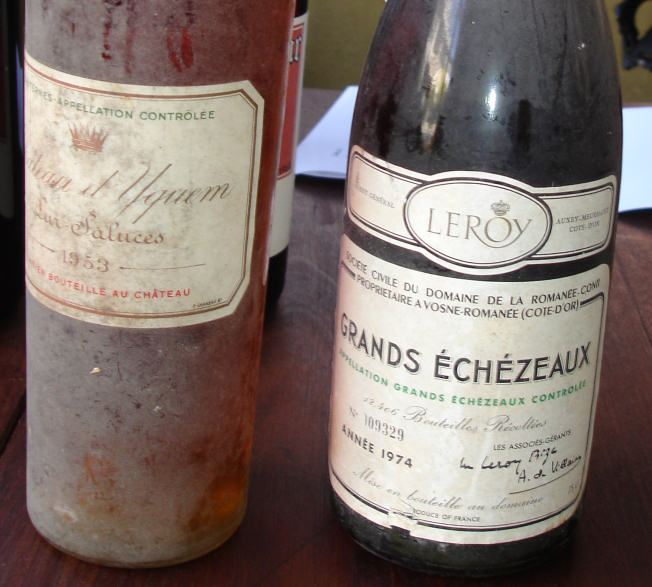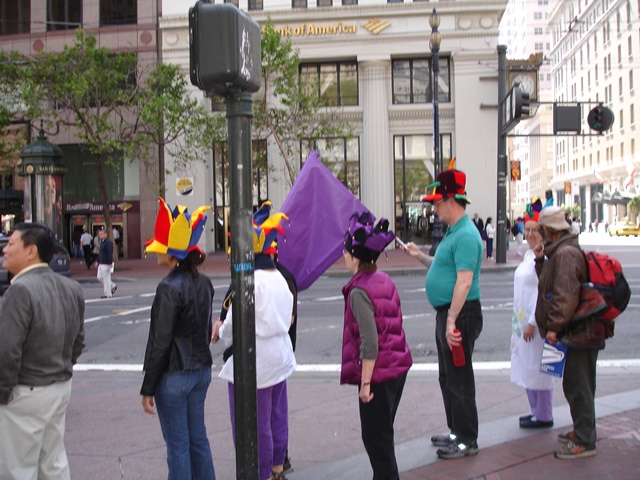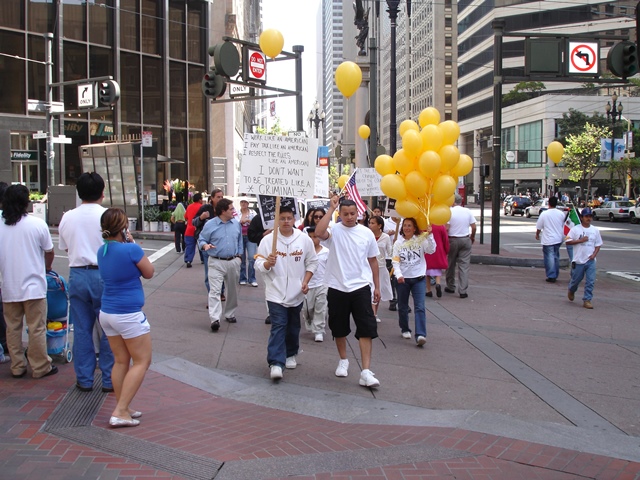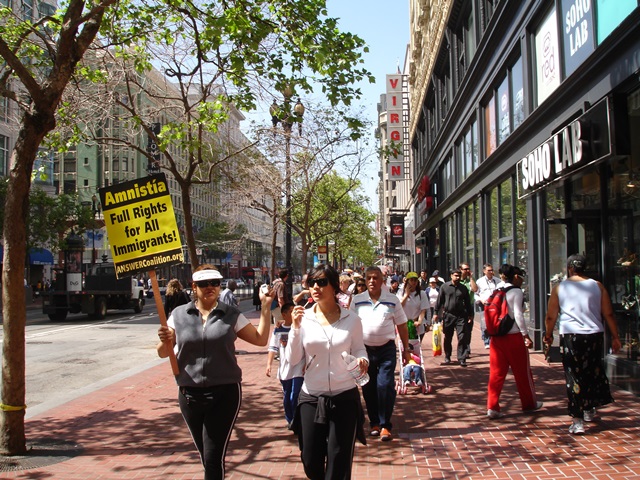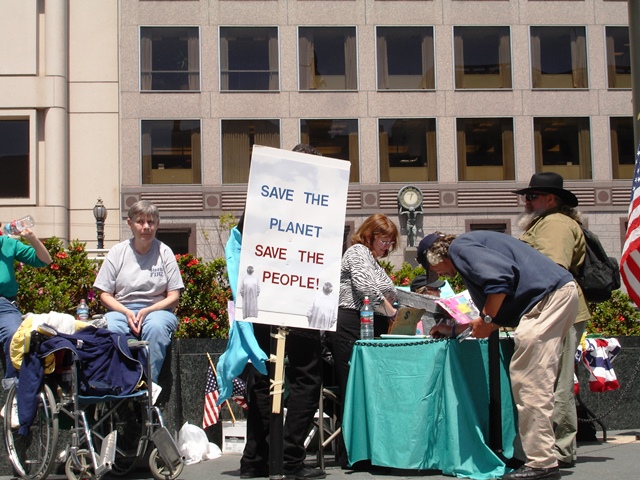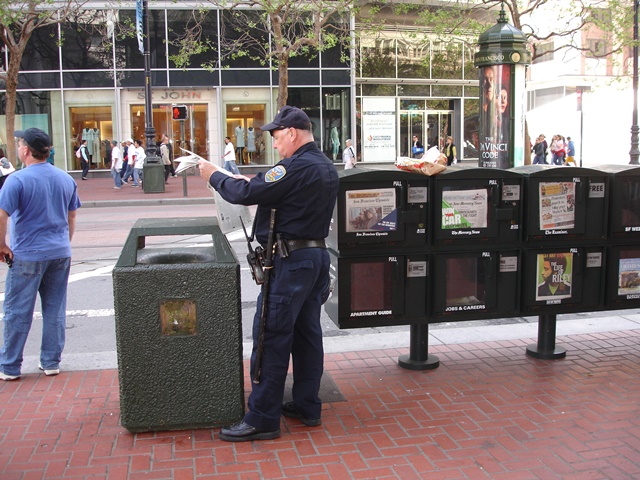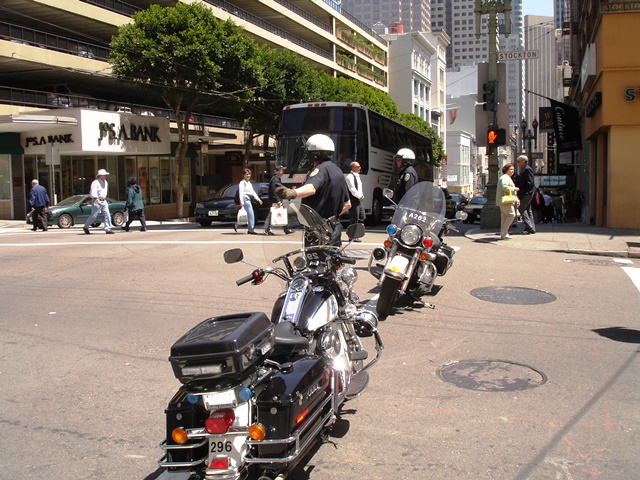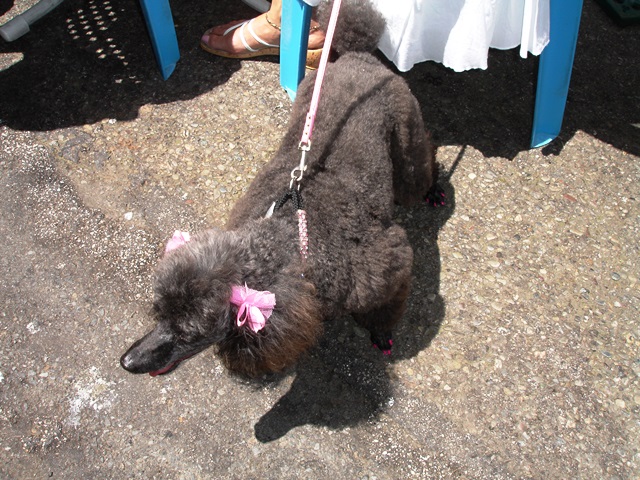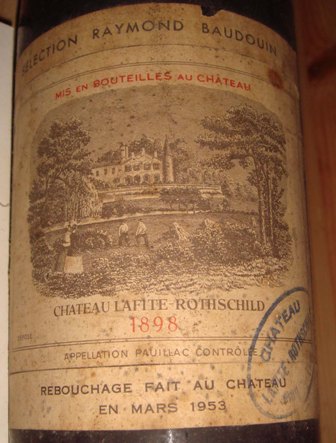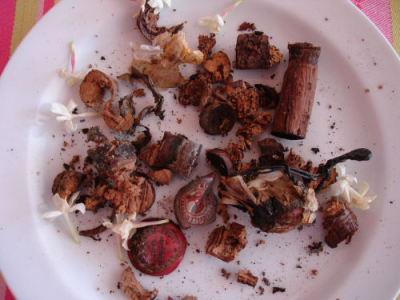After the dinner by Jack Falstaff, an American breakfast is a way to come back to life. I walk to see the Golden Gate. In its grey colour, it shows a different aspect which has a great interest too. The sun is shining, so, at the midday break, every piece of grass is taken by people who eat their lunch. Is it a lunch? All these paper bags that everyone has in hand, all these huge sandwiches which collapse as soon as you bite in it, this is a very remarkable aspect of working America.
Now, we are going to enter in my personal dreams. I wanted to meet some solid collectors. I have found one, and we share fantastic wines. In Paris, we had shared Petrus 1947, Lafite 1865 and my oldest Chateau Chalon, a 1864. And, to-night, we will do the same, but in San Francisco.
My friend J. takes me in my hotel and we arrive by Hotel Mandarin Oriental at 4 pm to open the bottles. My friend S., the collector, is already there, and his bottles are standing, plus extra bottles “in case”. I tell him with a smile : “I am sure that all our bottles are bad, so we will obliged to open the security bottles”. Alas, it was not necessary. The liquorous are perfect, the Olivier white 1947 is more a problem. It appears so maderised that I expect bad things. But we do not condemn it. It is the first time in my life that I open a bottle of Mouton with the label drawn by Carlu. I have some in my cellar, and whenever I see them, I admire them. But I had not yet opened one. Now it is made, we will see if the wine will be at the level of the beauty of the Carlu label.
When it is done, J. and me, we go to the Italian quarter, so active when the sun is glorious, and we sit at a terrace. He wants that I try a Syrah Renard ‘Arroyo Vineyard’ 2002 by the glass. The best description that I will give about this wine is that we have left, each of us, three quarters of our glass not drunk. This is, for me, a caricatural wine, probably in a bad shape for this bottle (I hope for the vineyard).
S. was waiting for us in Mandarin Oriental and leads us to the 38th floor, in a huge “suite”, where the view on San Francisco is impressive, with a big terrace in full air (and wind). We will have our aperitif there, and immediately I notice a familiar champagne in magnum installed in some ice. I have a look : magnum Cristal Roederer 1966. The colour is the one of a yellow fruit burnt by the sun, the nose is intense, and in mouth, a large taste which will become more and more complex as the champagne will open in our glasses and in the bottle.
The chef, Joel Huff, is a promising young chef who is probably going to be celebrated in one of the next issues of the Wine Spectator. Immediately, I see that he is not concerned by wine. Some great chefs are like him : Marc Veyrat and Pierre Gagnaire play in the same field. Wine does not belong to their strategy. But this young chef, who thinks he ameliorates his look by wearing a sport cap turned on the opposite side as rappers do, did not make a cook for the wines but to show his dexterity. The profusion of amuse-bouche of the highest level was not adapted : the blinis of the caviar were too tasty, my lips were bitten by the intensity of the spices, too much pepper in the scallops, the oysters losing their taste in a too marked sauce. But what struck me was the generosity of all that. And the Cristal 1966 was magnificent. Certainly the greatest Cristal for me, up to now.
We go down into the library where our table is installed. We are seven people in this huge room, but the atmosphere is very comfortable. One good point, the chef will come very often to see how things are going. He is serious.
While we are standing, S. gives me a glass of champagne and he asks me : “is this one older ?”. The taste is so similar to the Cristal 66 that I imagine a trick : it could be the same. But, tasting more seriously, I see that the structure of this one is more deep and elegant. It is Cristal Roederer 1949. Amazing. More noble than the 1966, it is quite unreal. It is probably one of my best ever champagnes.
Here is the menu : Santa Cruz baby abalone ceviche , yellowfin sashimi ponzu truffle vinaigrette, feta foam / pan seared foie gras, pineapple rhubarb, mountain berrey tea reduction, kohlrabi soup with mustard emulsion / ocean trout, preserved lemon and bone marrow risotto, edamame puree, sauce bordelaise / cedar wrapped squab, parsnip gnocchi, young grapes, king trumpet, liquorice and squab au jus / Colorado lamb rack, date puree, ramp injected loin / « Snake river » Kobe beef, braised beef ribs, smoked potatoe puree / Harmony blue cheese, Cresci Iowa / chocolate truffles, petifores, delights.
Needless to say that the chef did not choose the simplest way, but it was brilliant, even if not completely adapted to the wines. During the meal, all that was highly enjoyable.
The Vouvray le Haut Lieu, Huet 1959 has an architecture of the most precise definition. It is the well drawn wine, without any shadow, which is brilliant with no complication. The length is great, the personality is sympathetic, and the sweetness is well measured. After that wine, a nice soup was very clever to prepare us to other directions of tastes.
The Chateau Olivier white 1947 had a truly spectacular transformation with the oxygen it got. A wine that I was afraid of finding maderised was a strong young adult in its strength. I have seen many recoveries. This one was spectacular. Great white as Bordeaux can produce, with a subtle complexity.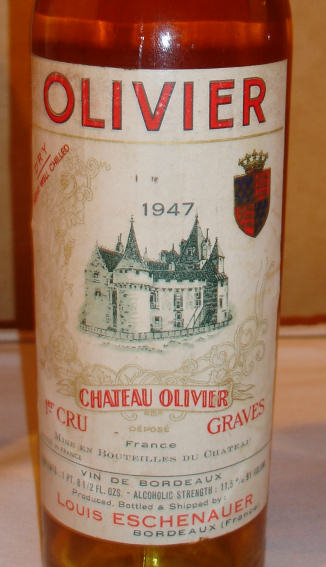
I am served in first with the Lafite Rothschild 1953, and I am surprised to notice all the table making so great compliments to the wine when I think that the wine is tired. I ask the sommelier to pour for me some drops from the middle of the bottle, and then, I understand why my friends were so happy. I had had the same reaction with the Petrus 1947 when I had the very first drops. So, my Lafite was now brilliant. This wine is extremely elegant. It is a very true Lafite, with all its charm. A great one. By comparison, the Pichon Longueville Comtesse de Lalande 1945 that I had brought was very masculine, military, square. A great wine too, but I prefer the charm of the Lafite.
Then, with the Mouton-Rothschild 1926, we climb tens of stairs. This wine will belong certainly to the first circle of my Pantheon. Everything in it is great. The nose is highly expressive, the attack has an enormous charm, announcing the pleasure to come. In the middle of the mouth, the wine is completely convincing, and the final is long as a poem. This wine is perfect. This one belongs to my best ever Mouton, under 1900 but certainly above 1870. It belongs to a group of 1926 that I have adored : Haut-Brion, Montrose, Pichon Comtesse, Pétrus, Mission.
I had been asked to check if the blue cheese was pertinent at 5 pm and I had refused some. But the blue of Iowa pleased me above all. And with the Château Coutet Barsac 1949, it is perfect. A golden colour, an intensity in nose, this wine is the pure joy of life.
It was good that we left the table to go back to the 38th floor, as the break was good to enjoy properly the Yquem 1935 which I had brought. The colour is lighter that the one of Coutet. There is less power, but the signature of Yquem is so magisterial that I am in love with the Yquem, despite the great performance of Coutet. But I must say that I accept probably more than others lighter Yquem.
My friend had opened a Banyuls 1947 for the chocolates and the cigars. I was so tired that I did not put my lips on this 16.5° wine.
I tried later to make a ranking. It could be different but here it is : 1- Mouton 1926, 2- Cristal 1949, 3- Yquem 1935, 4- Lafite 1953.
I was happy that my friend has adopted a plan for the dinner which was very similar to what I do. He is so generous, so happy when he sees my smile or my astonishment that we have created an atmosphere of pure mutual trust.
So, I imagine already all the mad dinners that we will make, and I wonder already which treasures I will open with him.
The next day, J. had ordered a limousine to drive me to the airport to go to L.A.
This brilliant dinner will belong to my best souvenirs.
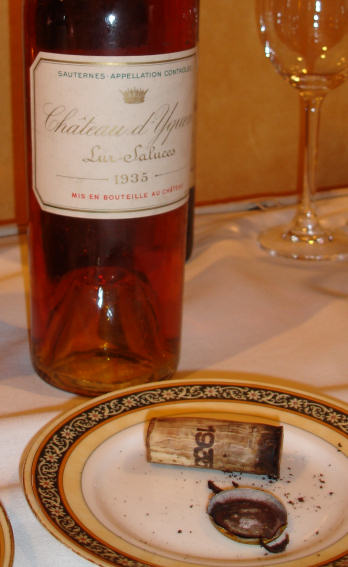 Sa délicatesse est exemplaire.
Sa délicatesse est exemplaire.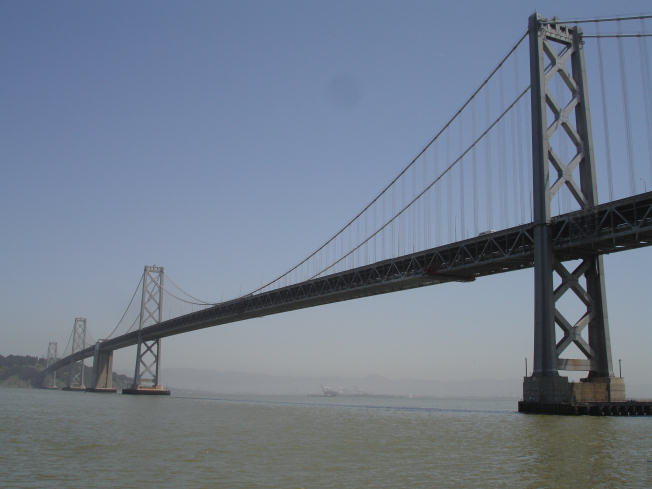 On est habitué à le voir rouge.
On est habitué à le voir rouge.